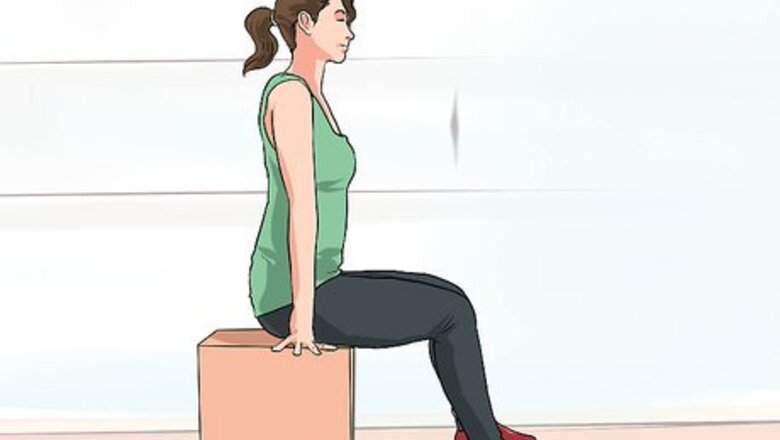
views
X
Expert Source
Julian Arana, M.S.eD., NCSF-CPTCertified Personal Trainer
Expert Interview. 19 May 2020.
Single leg squats target your glutes, hips, and quad muscles. Though the exercise is hard to pull off, there are different variations that make it easier to perform.
Doing a Chair or Partial Pistol Squat
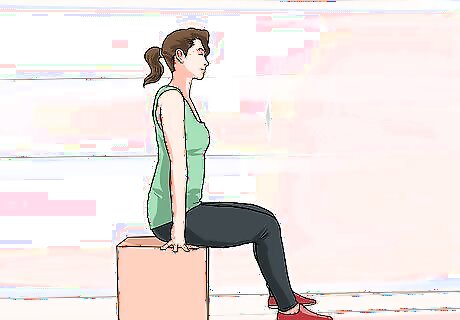
Sit on a bench, chair, or box that has clear space around it. You start this exercise in the sitting position. You’ll be using your chair or box to assist you in performing the squat. Make sure to clear all space around your exercise area to avoid injuring yourself or breaking something in your house. Choose a surface that is a little taller than knee height.
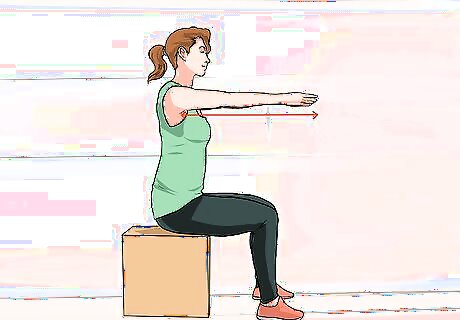
Extend your arms straight out, in front of your body. You can interlock your fingers together or just hold them out in front of you. Make sure that when you are doing the squat that your arms stay straight out and don’t dip or raise while you perform the exercise. Your arms should be running parallel to each other, and should be at shoulder height.
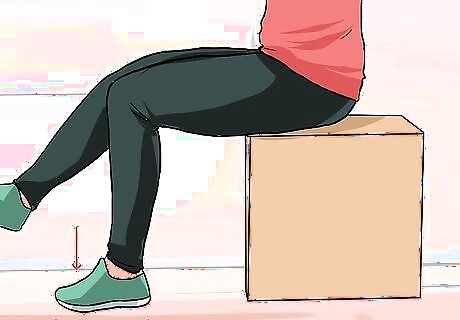
Put one foot flat on the ground with your knee bent. Your foot should be firmly planted on the ground with your toes pointed forward. Make sure that your heel does not raise off the ground.
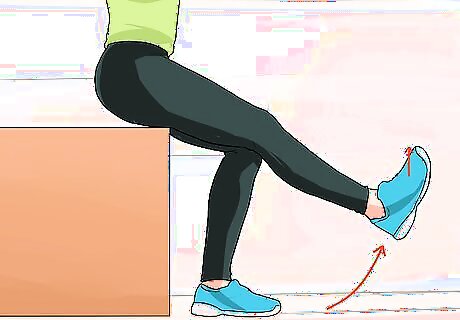
Extend your other leg out straight in front of you. Keeping your one leg bent, extend your other leg out in front of you and do not bend your knee. Your toes on your extended foot should point up at an angle towards the ceiling.
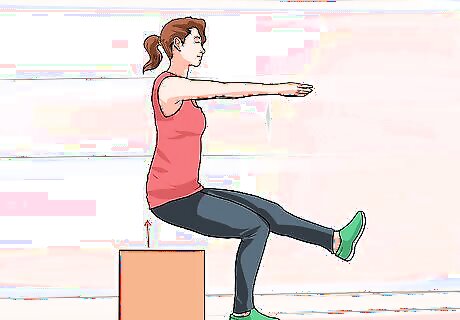
Press down with your heel and try to stand up, off the chair. Keeping your back straight, tighten your abs while you try to stand up, using your bent leg. Try to balance when you’re standing and hold it for one second before coming back down. There’s a possibility you’ll lose your balance at this stage. If this happens, just get in the position and try again.
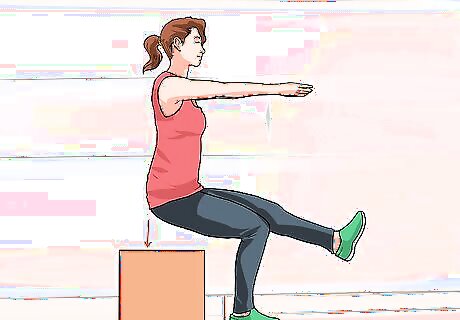
Slowly sit back down on the chair. After holding your standing position for one second, slowly sit back down in your chair. Keep your weight on your heel, and keep your chest lifted. Your aim is to control your body as you sit down so you’re not plopping down or falling onto the chair.
Doing an Assisted Rep Pistol Squat
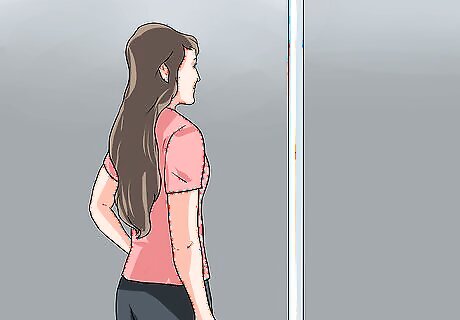
Find a pole or door frame that has space around it. You can find a pole to use at a gym or park. If you don’t have access to a pole you can use a door frame, or something sturdy that runs vertically in your house. Let people in the house know you’ll be using the doorway if you choose to use your door frame.
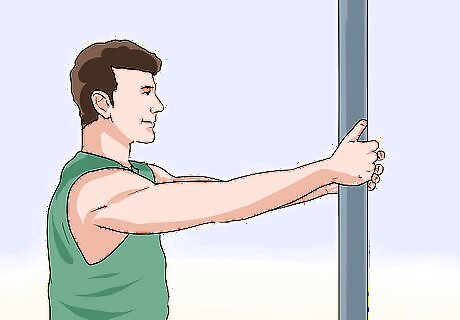
Grab onto the door frame with both hands at shoulder height. Using both hands, grip the door frame tightly. The door frame will act as your guide as you lower into the crouching position of the exercise. You should now be looking at door frame and holding onto it, with both feet 3-6 inches away from the door frame.
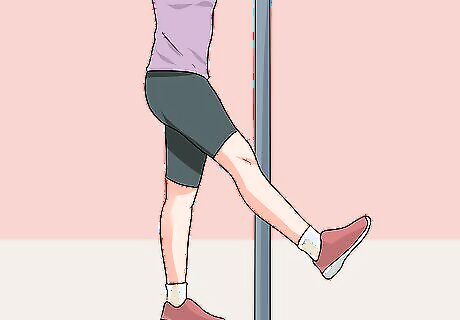
Extend one foot out past the door frame. Extend one of your legs out past the door frame and hold it straight. Your toes should be pointed at an angle towards the ceiling. Keep a good grip on the door frame or pole for balance and stability while your back remains straight.
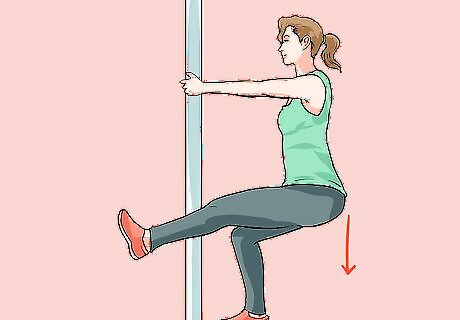
Lower yourself down by sitting back and bending your knee. As you are lowering yourself down, you can re-position your hands to follow the rest of your body down the pole or door frame. Try to get as low as you possibly can, so that your butt almost touches the ground. Do not rely on your arm strength to do this exercise. Relying too much on your arms will not provide the intended workout.
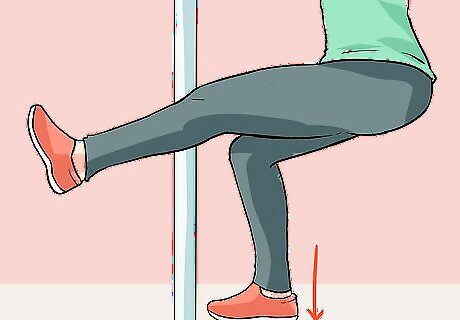
Press down with your planted foot and stand up. Maintain your balance by holding onto the door frame and push with your planted foot to stand up. Make sure that your extended leg stays straight and does not touch the ground. Don’t pull yourself up with your arms. Rely on the strength of your calves, glutes, and quads to stand up.
Doing a Full Pistol Squat
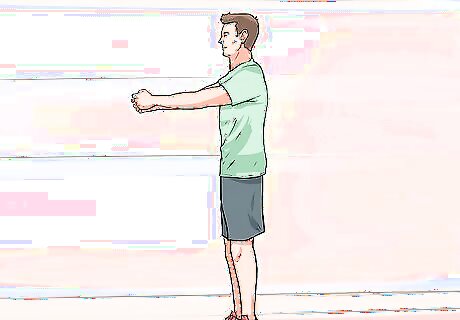
Extend both arms out in front of you. Stand upright with your feet shoulder width apart and extend both arms out in front of you while interlocking your fingers. Make sure both feet are planted on the ground with your toes pointed forward.
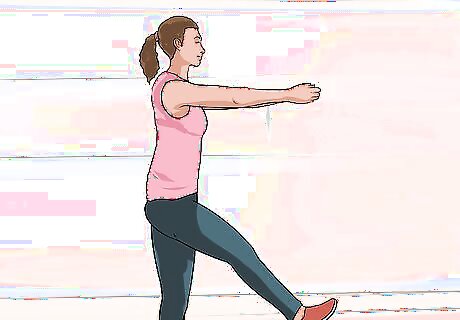
Extend one of your legs in front of you. Extend one leg out in front of you. Your knee should not be bent, and your foot should be on an angle with your toes pointed towards the ceiling. Do not let this leg or foot touch the ground. If you're not flexible or strong enough to do this yet, try bending your knee and lowering your leg to make it easier.
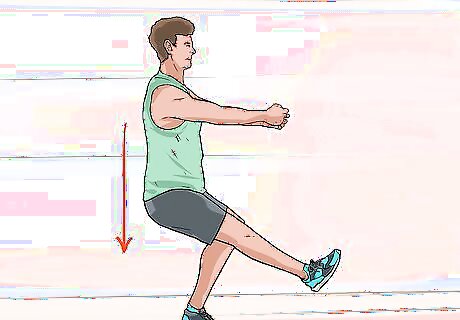
Lower your body by sitting back and bending your knee. The squatting motion should be fluid and not jerky as you sit back. Squat down as low as you can to get the most out of this exercise.
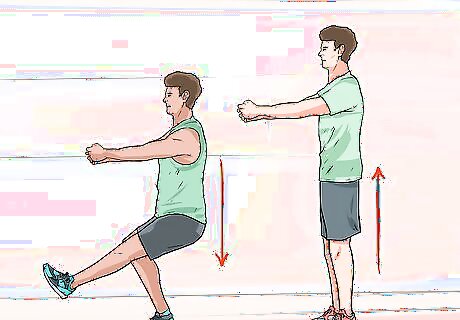
Press down with your foot and stand up. From the bottom position, push your heel against the floor and stand up. Make sure to keep your extended leg straight, and your arms out in the air in front of you. Don’t get discouraged if you lose balance when you first attempt this exercise.
Assessing Your Abilities and Staying Safe
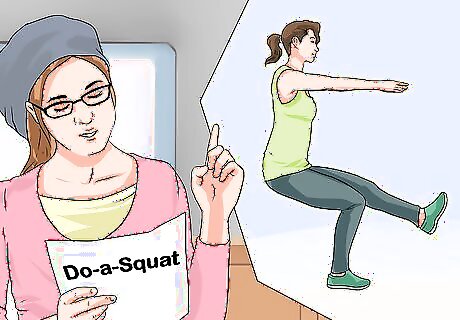
Make sure you can perform free squats first. Single leg squats are more difficult than free squats or weighted squats, so you should make sure that you can do regular squats first. Being able to perform free squats, which is one of the easiest variations, will give you an indication if you're ready to start trying single leg squats. Test your abilities further by putting a barbell in your arms while performing a free squat. Read Do-a-Squat, Box-Squat, and Do-Free-Squats if you’re unsure how to perform traditional squats. EXPERT TIP Laila Ajani Laila Ajani Fitness Trainer Laila Ajani is a Fitness Trainer and founder of Push Personal Fitness, a personal training organization based in the San Francisco Bay Area. With over 10 years as a trainer and exercise specialist, Laila has expertise in competitive athletics (gymnastics, powerlifting, and tennis), personal training, distance running, and Olympic lifting. Laila is certified by the National Strength & Conditioning Association (NSCA), USA Powerlifting (USAPL), and she is a Corrective Exercise Specialist (CES). Laila Ajani Laila Ajani Fitness Trainer For beginners, chair or box squats can be a good variation. Doing a high rep of easier squats can help you build strength and train your body to reach the proper squat positions. If you're currently unable to do squats, start with lunges until you gain strength, and then try squats later on.
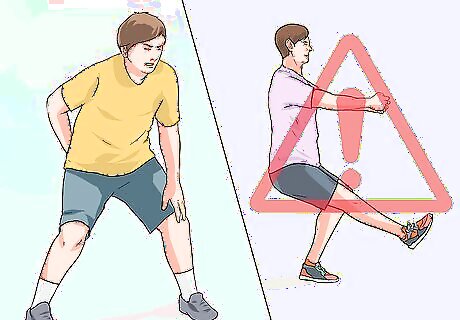
Refrain from squats if a knee, back, hip, or ankle injury is bothering you. Single leg squats put stress on a number of different joints and muscles. If you’ve had a recent injury, you should refrain from doing single leg squats until your injury has fully healed. Even if it’s an old injury, pain could still flare up. If it does, it’s recommended you seek medical attention. Do not eliminate exercise altogether when injured. Change your routine so you aren’t putting stress on the tendons or joints that are injured, and reduce the frequency in which you work out.
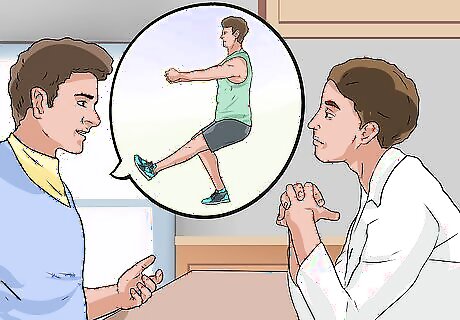
Speak with your doctor before beginning a new exercise routine. This is especially important if you suffer from a chronic illness or heart condition. While exercise is typically good for the body, under certain circumstances it could become very dangerous. Make sure to always consult a physician when changing your wellness routine. Exercising can, in some circumstances, slow strengthen decline from muscle related illnesses. If you have diabetes, exercising could lower your blood sugar which could cause light headedness or fainting.
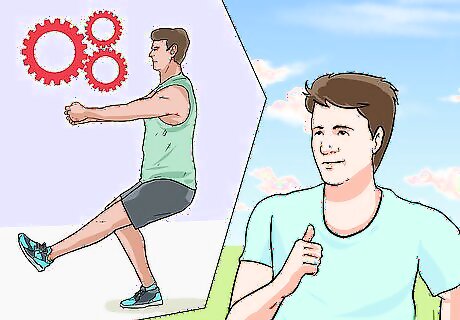
Practice and build up to the single leg squat. Many people who go to the gym simply can not perform the single leg squat, so it’s important to keep practicing until you’re able to achieve it. Before trying the full pistol or single leg squat, master the assisted pistol and partial pistol squat so you can build up your technique and endurance.














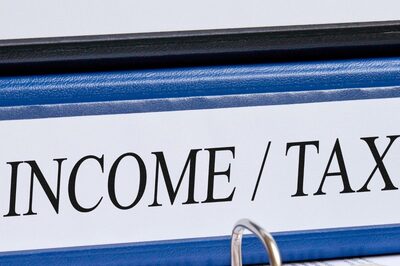





Comments
0 comment